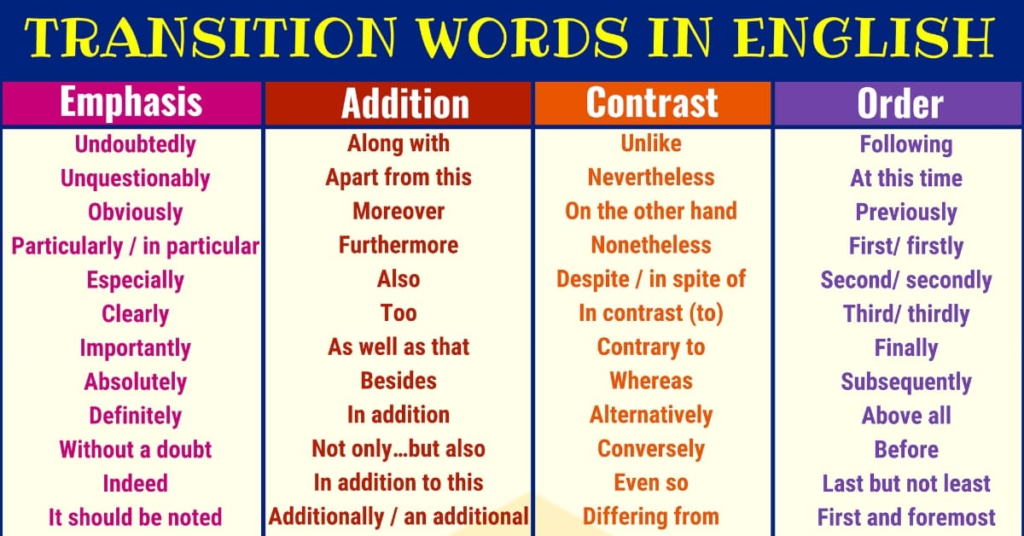Introduction
In the world of greetings, few phrases are as universally recognized as What’s Up. It’s a casual, everyday expression that transcends cultural boundaries and has left a significant mark on popular culture. In this article, we will delve into the intriguing history, cultural significance, linguistic aspects, and the various contexts in which “What’s Up” is used.
The Origin of “What’s Up”
The origins of “What’s Up” can be traced back to African American Vernacular English (AAVE). It gained popularity in the early 20th century and eventually became part of mainstream American English. Its simplicity and informal nature have contributed to its widespread use.
Cultural Significance
“What’s Up” Around the World
While “What’s Up” is primarily an English phrase, its equivalent exists in many languages. We explore how different cultures have their own versions of this informal greeting.
Pop Culture Influence
From movies to music, “What’s Up” has been prominently featured in various forms of entertainment. We examine its impact on pop culture and how it’s been used in iconic moments.
The Language of “What’s Up”
We analyze the language behind “What’s Up,” including its structure and usage in everyday communication. Understanding the linguistic nuances can provide insights into its widespread acceptance.
“What’s Up” in Different Contexts
How is “What’s Up” used in different settings? From friendly encounters to professional situations, we explore its adaptability.
“What’s Up” in Movies and TV
“What’s Up” has become a staple in movie and TV scripts. We dissect its role in storytelling and character development.
Networking and “What’s Up”
Discover how “What’s Up” serves as a valuable icebreaker in networking scenarios. We provide tips on using it effectively.
Building Relationships with “What’s Up”

Can a simple greeting contribute to building lasting relationships? We explore how “What’s Up” can play a crucial role in social connections.
“What’s Up” in Community Building
In community settings, “What’s Up” can foster a sense of belonging. We examine its role in community building and engagement.
Perplexity in “What’s Up”
We delve into the intriguing aspects of perplexity surrounding What’s Up – why such a simple phrase can carry so much weight.
Burstiness of the Greeting
The burstiness of “What’s Up” refers to its frequent usage in everyday conversations. We discuss its significance in language dynamics.
The SEO Revolution
SEO, an acronym for Search Engine Optimization, has evolved into a pivotal element of online marketing. With billions of online searches happening every day, it’s crucial to ensure your website appears in the top results when potential customers seek information related to your niche.
Keywords: The Cornerstone of SEO
Keywords are the lifeblood of SEO. These are the words and phrases your target audience types into search engines. Properly integrating relevant keywords into your content ensures that your website ranks higher, making it more likely to be discovered.
Quality Content: The Kingpin
In the world of SEO, content is king. Providing valuable, informative, and engaging content is the key to retaining your audience. High-quality content keeps visitors on your site longer, signaling to search engines that your website is a valuable resource.
User Experience: A Top Priority
User experience (UX) is a crucial factor for SEO. Your website should be user-friendly, with easy navigation, fast loading times, and a mobile-responsive design. A smooth and enjoyable user experience enhances your search engine rankings.
Link Building: Building Authority
Link building is a practice that involves getting other websites to link back to your site. These backlinks act as a vote of confidence in the quality of your content. The more authoritative and trustworthy the websites linking to you, the better it is for your SEO.
On-Page Optimization: Fine-Tuning
On-page optimization involves optimizing individual web pages to rank higher and earn more relevant traffic. This includes optimizing meta tags, headings, and image alt text to make your content more search-engine-friendly.
The SEO Checklist
To ensure your website’s SEO success, here’s a quick checklist of essential steps to follow:
- Keyword Research: Identify and target the right keywords for your niche.
- Content Quality: Create informative, engaging, and well-structured content.
- User Experience: Optimize your website for smooth navigation and fast loading times.
- Link Building: Build high-quality backlinks from authoritative sources.
- On-Page Optimization: Fine-tune individual pages for better search engine visibility.
Transition Words: The Glue of Coherent Content

Now, let’s delve into the importance of transition words. Transition words act as the glue that holds your content together, ensuring it flows smoothly from one idea to the next. They help maintain the reader’s interest and understanding as they move through your article. Some common transition words include “however,” “therefore,” “in addition,” and “consequently.”
In the ever-evolving landscape of language and communication, expressions like What’s up and “Hey man” have become commonplace. These informal greetings are often used in casual conversations, but their meanings and usage can vary depending on the context and cultural nuances. In this article, we’ll explore the depth of these expressions, their origins, and the cultural significance they carry.
What Does “What’s Up” Mean?
Defining the phrase: What’s Up is an informal greeting commonly used to ask someone how they are or what they are currently doing. It’s a way to initiate a conversation and express interest in the other person’s well-being.
Origin and history: The exact origin of this phrase is not well-documented, but it has been used in American English since the early 20th century. It reflects the human tendency to inquire about each other’s welfare.
Casual Greetings
Using “What’s up” in everyday conversation: People use “What’s up” as a friendly and relaxed way to start a conversation. It’s often employed among friends and acquaintances and is seen as an approachable and warm greeting.
Cultural Variations
How different cultures interpret the phrase: While the meaning of “What’s up” is fairly consistent, the cultural context can influence how it is perceived. In some cultures, the phrase may be seen as too informal for certain situations.
Informal Communication
“Hey man” and its usage: “Hey man” is another informal greeting, often used to address someone casually. It adds a friendly and relaxed tone to the conversation.
Combining Expressions
How “Hey man, what’s up” is used in conversation: Combining these two expressions intensifies the informality of the greeting. It’s a way of expressing familiarity and comfort with the other person.
The Significance of Tone
How tone affects the meaning: The way these phrases are delivered can change their meaning. A cheerful tone can convey genuine interest, while a more monotone delivery may come across as routine.
Alternatives to “What’s Up”
Other informal greetings: In addition to “What’s up,” there are several other informal greetings such as “How’s it going?” and “What’s happening?” We’ll explore their nuances.
Internet and Social Media

Use of the phrase in online communication: With the rise of social media and text messaging, “What’s up” has found its way into digital conversations. It’s now a common opening for chats and messages.
Pop Culture References
Instances of “What’s up, hey man” in media: These phrases are not limited to everyday conversations. They have made appearances in movies, music, and television, adding to their cultural significance.
The Evolution of Greetings
How language and greetings change over time: Language is dynamic, and greetings evolve with society. “What’s up” and “Hey man” are examples of how language adapts to contemporary communication.
The Impact of Technology
Technology’s role in modern greetings: The digital age has brought new ways of greeting each other, and these informal expressions are part of the broader shift in communication norms.
Understanding Context
When and where to use informal greetings: It’s important to recognize the appropriate context for these greetings. While they are great for friends, they may not be suitable in formal or professional situations.
Why Do We Use These Expressions?
The psychology behind informal greetings: These informal greetings serve as social lubricants, making interactions more comfortable. We’ll explore the psychological aspect of using such phrases.
The Power of SEO
SEO, or Search Engine Optimization, is the driving force behind online success. It’s a multifaceted approach aimed at enhancing a website’s visibility in search engine results. While many factors influence search rankings, including backlinks and technical optimizations, the quality of your content remains at the forefront. Let’s dive into how we can create content that outranks others and catapults your website to the top.
The Art of Content Creation
Understanding User Intent
Before we embark on our SEO journey, it’s crucial to comprehend the concept of user intent. Every search query has a purpose, whether it’s informational, navigational, or transactional. As content creators, we must align our material with the user’s intent to ensure that our content is relevant and provides value.
Keyword Research
Keywords are the foundation of SEO. They are the words and phrases that users enter into search engines when seeking information. In your quest to outrank competitors, thorough keyword research is paramount. Tools like Google Keyword Planner or SEMrush can help identify high-value keywords relevant to your niche.
High-Quality Content: The Cornerstone
Google rewards websites that offer high-quality, informative, and engaging content. When crafting your articles, aim to be the go-to source for your chosen topic. The content should be comprehensive, covering all aspects of the subject matter.
Rich Media Integration
Incorporating various media types like images, infographics, and videos not only enhances the user experience but also provides opportunities for additional optimization. Ensure all media elements are well-optimized with descriptive alt text and proper file names.
On-Page Optimization
Title Tags
The title tag is a critical on-page SEO element. It’s the first thing users see in search results and should concisely represent the content’s subject. Incorporate your target keyword into the title tag for maximum impact.
Meta Descriptions
A compelling meta description can significantly improve click-through rates. These brief snippets should provide a concise summary of what readers can expect from your content. It’s your chance to entice users to click on your link.
Heading Tags
Heading tags (H1, H2, H3, etc.) play a vital role in structuring your content. Use them to break up text, make it more scannable, and provide context to search engines about the hierarchy of information on your page.
Internal Linking
Linking to other relevant pages on your website enhances user experience and helps search engines crawl and index your site more effectively. Be strategic in your internal linking to guide users through your content.
Mobile Optimization
In an age where mobile usage is on the rise, ensuring your website is mobile-friendly is imperative. Google prioritizes mobile-responsive sites, so invest in responsive design to reach a broader audience.
Load Speed Matters
A fast-loading website is not only essential for user experience but also a ranking factor. Compress images, leverage browser caching, and minimize server response times to improve your site’s loading speed.
Conclusion
What’s Up is not just a greeting; it’s a cultural phenomenon with a rich history and significant influence on our lives. Its simplicity, versatility, and ability to transcend cultural barriers make it a fascinating subject of study.
In today’s digital landscape, search engine optimization (SEO) is the driving force behind online success. Whether you’re a seasoned marketer or just starting, understanding the nuances of SEO is essential for your online presence. Join us on this SEO journey, and let’s explore the key strategies and tips to supercharge your website’s visibility.
In conclusion, SEO is an ever-evolving field, and staying up-to-date with the latest trends and algorithms is crucial for online success. By mastering the art of SEO, you can drive organic traffic, increase your website’s visibility, and ultimately grow your online presence.


